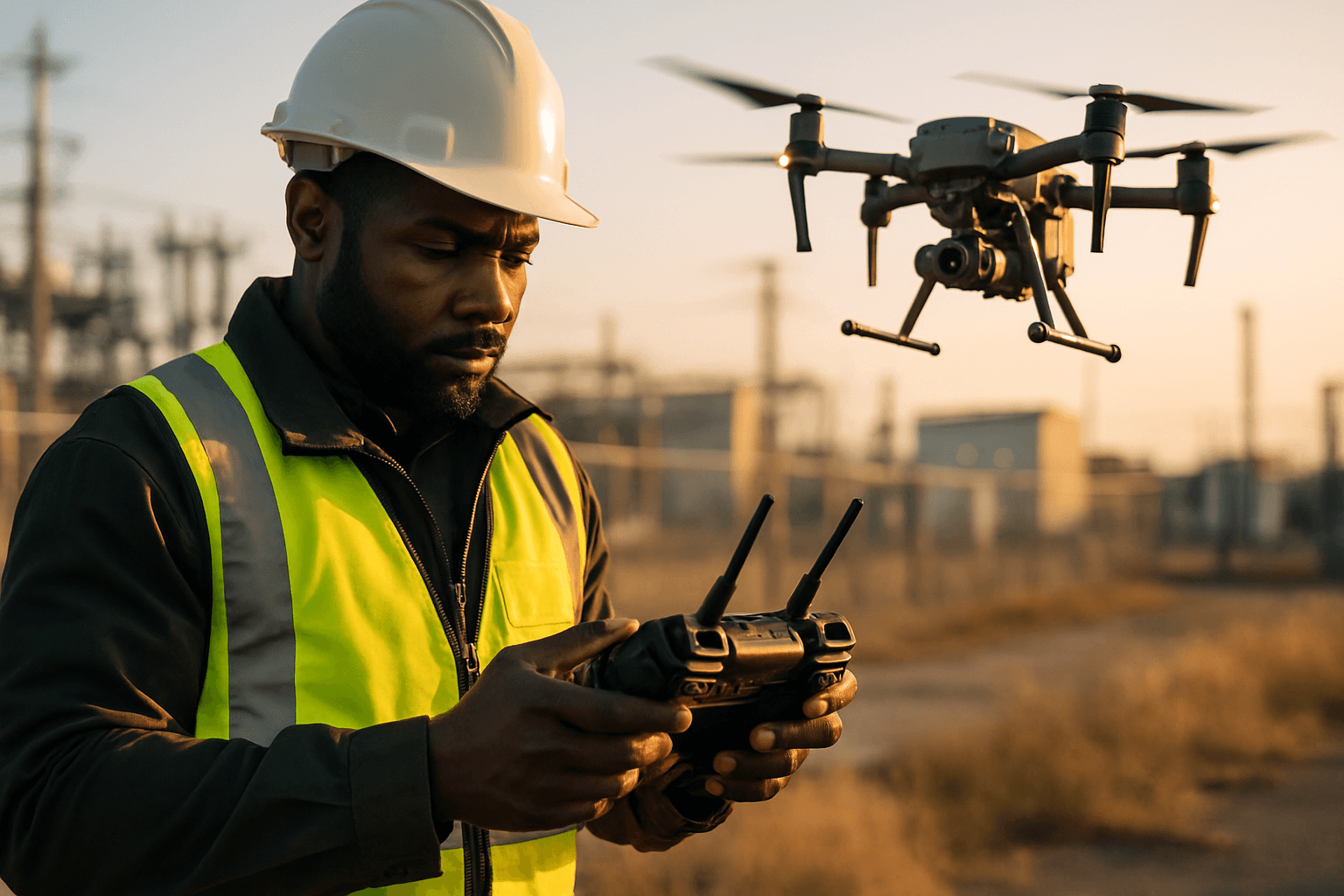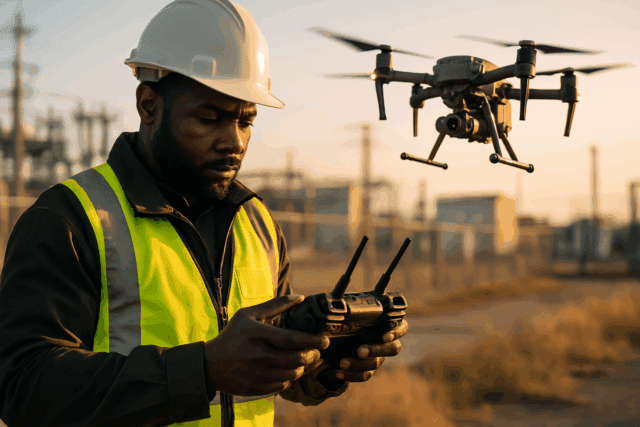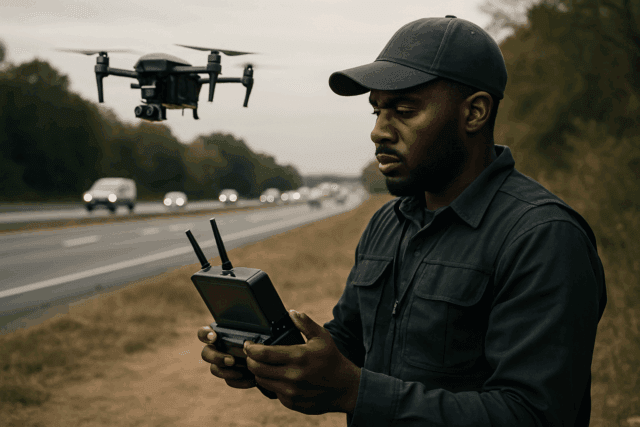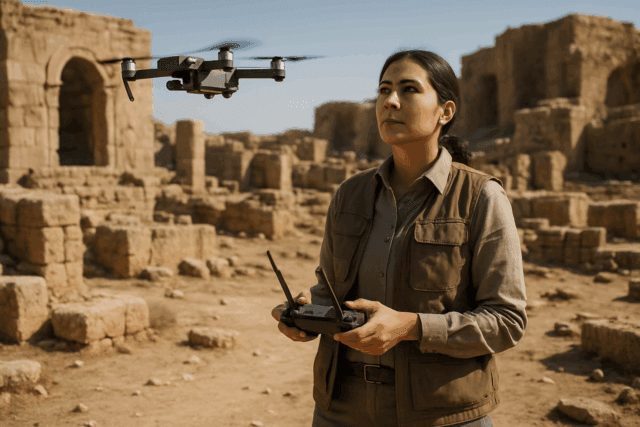In an era of increasingly complex security landscapes, safeguarding critical infrastructure has become a paramount concern. From energy facilities and transportation hubs to communication networks and government installations, these vital assets are susceptible to a range of threats, including espionage, terrorism, and malicious attacks. Traditional security measures often fall short in addressing the evolving nature of these risks. This is where the deployment of Unmanned Aerial Vehicles (UAVs), commonly known as drones, emerges as a powerful and transformative solution, offering unparalleled agility, versatility, and real-time intelligence for infrastructure protection.
The Growing Need for Enhanced Infrastructure Security
Critical infrastructure forms the backbone of modern society, and its disruption can lead to cascading failures with severe consequences for national security, public safety, and economic stability. The threats are diverse, ranging from physical sabotage and unauthorized access to cyber intrusions and reconnaissance by hostile actors. The sheer scale and often remote locations of many critical infrastructure sites make comprehensive traditional surveillance both challenging and prohibitively expensive. This has created a significant and largely unmet demand for innovative security solutions capable of providing robust, adaptable, and cost-effective protection.
The proliferation of commercially available drones, while beneficial for many industries, also presents a new vector for threats. Malicious actors can utilize these inexpensive and easily operable drones for surveillance, to deliver contraband, or even to carry out attacks, posing a significant challenge to existing security perimeters.
How Drones Revolutionize Surveillance and Security
Drones, equipped with advanced sensor technology and autonomous capabilities, are fundamentally changing how vulnerable infrastructure is monitored, maintained, and secured. Their ability to provide an aerial perspective, access difficult-to-reach areas, and operate continuously offers significant advantages over conventional methods.
Key Capabilities of Security Drones
- Advanced Sensor Integration: Modern security drones can integrate a variety of high-performance payloads, including high-resolution optical cameras, thermal imaging cameras, night vision, and radar systems. This allows for enhanced detection capabilities day and night, even in low-light conditions or adverse weather. Thermal imaging, for instance, can identify heat signatures indicative of intruders or equipment malfunctions that might be invisible to the naked eye.
- Real-time Monitoring and Data Transmission: Drones provide uninterrupted live feeds and can transmit real-time data securely to security teams. This immediate flow of information is crucial for rapid assessment of incidents and informed decision-making during emergencies.
- Wide Area Coverage and Perimeter Surveillance: Critical infrastructure sites often span vast areas. Drones offer superior endurance and range, enabling them to cover extensive perimeters and specific sectors more effectively than ground patrols. Automated perimeter sweeps can be performed with minimal human intervention, ensuring continuous vigilance.
- Rapid Deployment and Response: “Drone-in-a-box” solutions allow for quick deployment, with UAVs able to be airborne within a minute and reach targets at high speeds. This rapid response capability is vital when every second counts in mitigating potential threats or assessing incidents.
- Terrain Adaptability: Drones can navigate diverse landscapes, from industrial complexes and energy facilities to remote border regions, providing a strategic advantage in comprehensive security. They can access areas that are hazardous or inaccessible to human personnel, significantly reducing risk.
Specific Applications in Infrastructure Security
The versatile nature of drones makes them applicable across numerous critical infrastructure sectors, enhancing security posture and operational efficiency.
Energy Facilities
Power plants, electrical grids, oil and gas pipelines, and substations are prime targets. Drones can conduct continuous surveillance of vast networks, identify potential vulnerabilities, and detect unauthorized intrusions or suspicious activities around these critical assets. They can also inspect for physical damage or operational issues, often more safely and efficiently than human inspection crews.
Transportation Hubs
Airports, ports, railways, and bridges require constant monitoring. Drones can patrol large areas, identify security breaches, and even assist in tracking individuals or movements. For instance, drones can provide a bird’s-eye view of port operations, detect illegal activities, or inspect bridge integrity without disrupting traffic.
Government and Public Facilities
Sensitive government buildings, data centers, and public spaces can benefit from drone surveillance to monitor crowds, deter potential threats, and provide aerial oversight during events or emergencies. Drones can also be used to establish no-fly zones over critical facilities, preventing unauthorized UAS incursions.
Border Security
Drones are invaluable for patrolling long and often challenging border regions. Equipped with thermal and night vision, they can detect illegal crossings or smuggling activities, providing real-time intelligence to ground personnel.
Benefits of Drone Deployment for Security
The adoption of drones for infrastructure security offers a multitude of benefits, transforming traditional security paradigms.
- Enhanced Safety: Drones reduce the need for human personnel to undertake dangerous inspections or patrols in hazardous or remote locations, significantly minimizing risks and liabilities.
- Cost-Effectiveness: While initial investment exists, drones can lower overall security costs by reducing the need for extensive human patrols, expensive ground-based equipment, and infrastructure maintenance. They can cover larger areas with fewer resources and conduct inspections much faster.
- Increased Efficiency and Speed: Drone inspections are significantly faster than traditional methods, allowing for more frequent monitoring and quicker identification of potential issues. Their rapid deployment capabilities ensure quick response times to unfolding events.
- Improved Data Accuracy and Detail: Drones capture high-resolution images and videos, providing precise and thorough data for inspections and situational awareness. This data can be used to create detailed 3D models of infrastructure, aiding in maintenance planning and decision-making.
- 24/7 Monitoring Capabilities: With advanced sensors and autonomous operation, drones can provide continuous surveillance around the clock, regardless of lighting conditions. Automated battery exchange systems further enable sustained operation.
- Deterrence: The visible presence of drones can act as a deterrent to potential intruders or malicious actors.
Challenges and Considerations
Despite their numerous advantages, the widespread deployment of drones for infrastructure security also presents challenges that need to be addressed.
- Regulatory Frameworks: Regulations governing drone operations, especially beyond visual line of sight (BVLOS), are still evolving and can limit the scope of deployment. Establishing “no-fly zones” over critical infrastructure is crucial, as is having clear protocols for engaging unauthorized drones.
- Cybersecurity Vulnerabilities: Drones, as internet-connected devices, are susceptible to cyber threats such as GPS spoofing, command and control interception, downlink interception, DDoS attacks, and signal jamming. Protecting the integrity of drone systems and the data they collect is paramount.
- Technology Evolution and Counter-Drone Solutions: The rapid advancement of drone technology means security systems must also evolve to counter increasingly sophisticated threats. This includes differentiating between authorized and unauthorized drones and having effective counter-drone measures, such as drone hunting systems, in place.
- Integration with Existing Systems: For optimal effectiveness, drones must seamlessly integrate with existing security infrastructure, command and control systems, and communication networks.
- Staffing and Training: Operating and managing drone fleets, as well as analyzing the vast amounts of data they collect, requires trained personnel.
- Weather Limitations: While many drones are designed for adverse weather, extreme conditions like heavy rain, strong winds, or snow can still impact their operational effectiveness.
The Future of Drones in Infrastructure Protection
The future of drone deployment for securing vulnerable infrastructure is poised for significant advancements. Integration with artificial intelligence (AI) and machine learning will enable drones to perform more autonomously, identify anomalies with greater accuracy, and even initiate preemptive responses. AI-driven drone swarms could independently inspect and diagnose entire grids, radically changing response times and maintenance.
Further advancements in sensor technology, battery life, and navigation systems will enhance capabilities, allowing for even longer endurance, greater precision, and more comprehensive data collection. The development of digital twins, where drones create 3D digital counterparts of buildings and infrastructure, will aid in safety analysis, forecasting, and planning.
As the threat landscape continues to evolve, drones will become an indispensable tool in creating a multi-layered, robust, and intelligent security framework for critical infrastructure worldwide, ensuring resilience and public well-being.





